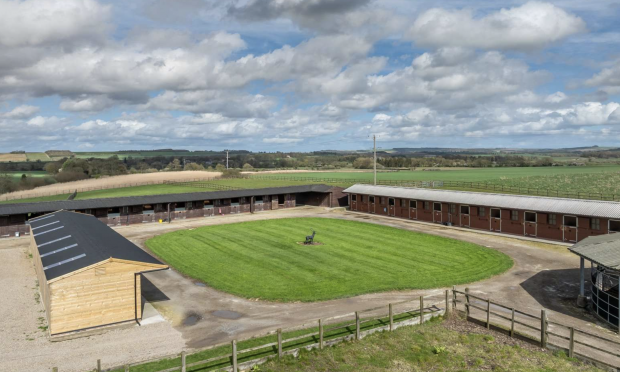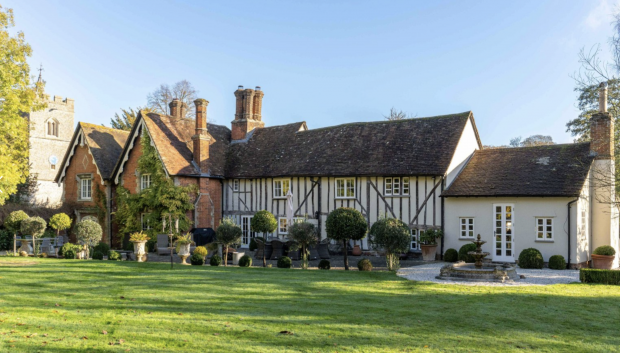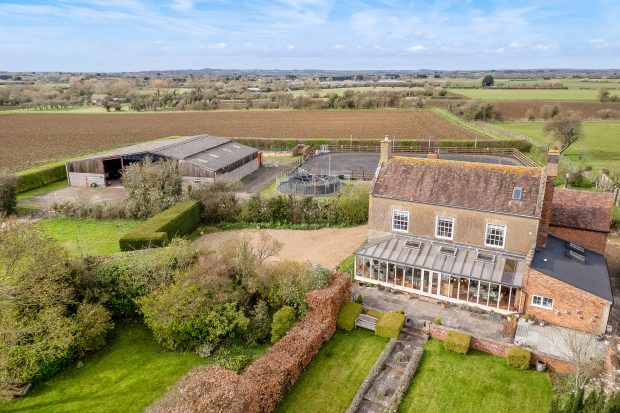View equestrian properties for sale >>
Can you guess what the difference is between Britains property hotspots and her less popular counties. Well, a poll of specialist estate agents reveals that it is up to a staggering 200%.
To find out exactly what buyers can expect to cough up or vendors expect to make for their home, Horse & Hound asked agents to give a range of values for the archetypal private equestrian property a four-bedroom farmhouse-style home with about five acres of well-fenced paddocks, five good-quality stables, a tackroom and a manège in good condition in his or her area.
The short outcome of this poll is that you must prepare to open your purse strings. The long one is that the same type of property can cost up to three times as much in prized hotspots of Surrey or Cheshire over, say, Derbyshire or Lincolnshire. So people who are prepared to face a longer commute or move to slightly less popular counties can still get a decent deal.
Equestrian property values are very much linked to the residential property market and follow its fortunes, says William Duckworth-Chad of Savills Country department. Hampshire, which is still very popular with those who work in the City, will be much more expensive than Nottingham. The land and buildings element of an equestrian property will be pretty similar in value across the country, dependent on quality.
In other words, it boils down to the good old location, location, location truism, as the fierce competition and price pressure exerted by lifestyle buyers can make a huge difference to the equestrian market.
Take the uber-expensive south-east. Diana Andrews of Churchill Country & Equestrian, who covers East and West Sussex, Surrey and Hampshire, reports that the four-bedroom sample property would cost between £1.2million and £1.5m in an area of outstanding beauty and hacking, with easy access to London and the airports, within range of competition centres, but close to good hunting country, such as the Surrey Hills, the South Downs, the New Forest or Ashdown Forest.
Move out of these sought-after corners into an average area, with reasonably quiet lane and bridleway hacking, access to local towns, and train and motorway links, and the price tag will drop to about £850,000-£950,000.
And although Diana points out that property wont be cheap anywhere in Sussex, Surrey and Hampshire, buyers who are prepared to live away from London-bound trains and motorways, cross a busy road to access quiet hacking, have land that could perhaps flood or have a footpath running directly across their domain, may well find something for as little as £700,000.
Much the same price range applies to Cheshire, where equestrian buyers vie with wealthy Mancunians for the best homes with land. A four-bedroom house with five acres and good equestrian facilities in postcard-pretty Tarporley only 35 miles from Manchester costs in the region of £1.2m to £1.5m, according to Britt Blower of Denton Clark in Chester.
Elsewhere in Cheshire, buyers would probably be looking at spending about £800,000-£900,000, although, in a county that takes pride in being horse-friendly, equestrian homes are sought after, so have a niche of their own, says Britt.
The keenest prices are available towards Malpas and the Shropshire end of the county, where values can drop up to 10% to 20%.
Over the border in north Wales, prices decline even more.
Even if good-quality land is fetching a good price, and you are taking stabling into account, you tend to find that a four-bedroom equestrian property will hit around £600,000, says Britt. You rarely find one that lifts above £1m.
What is perhaps more surprising, however, is that the same £600,000 would go just as far, or even further, over the eastern Cheshire border into Derbyshire.
Debunking the received wisdom that the cheapest property prices are found outside England, Derbyshire and neighbouring Nottinghamshire are among the most affordable counties in the whole country.
Here, William Duckworth-Chad reports that a four-bedroom equestrian home with stables and five acres costs as little as £400,000-£500,000.
Nearby Lincolnshire also offers appealing opportunities for budget-conscious buyers.
Around Spalding and Sleaford, a four-bedroom equestrian property would be somewhere between £450,000 and £500,000, says Kate Harpham of Strutt & Parker in Market Harborough.
For the same reason, you may find this type of property at £450,000 to £550,000 in Norfolk and Cambridgeshire, according to Emily Cooper-Reade of ECR Property.
It also matters that much of this corner of the country consists of the Fens low-lying former wetlands stretching from Lincolnshire to Cambridgeshire and Norfolk. This very flat landscape is suited to industry and business, so riders who can relocate here and work locally are likely to get excellent value for money.
Just how good the value these counties offer is becomes evident when comparing their prices with those of nearby areas that are better linked to London.
A four-bedroom home in Suffolk, all the way up to the border with Norfolk, for example, would likely cost in the region of £550,000-£650,000, rising to £750,000 for the areas that have the best links to London with the exception of Newmarket, which is a law unto itself. But in the metropolitan areas of Essex it leaps up to £1m, according to Zoe Napier of Fenn Wright.
Even the equestrian paradise that is the south-west is only marginally cheaper. Mike Buckland of Seddons in Dulverton reports a price range of £600,000-£750,000 except that here it is proximity to Exmoor National Park, rather than a busy city, that makes all the difference.
The rationale behind the price differences lies in the position of the properties with regards to the Exmoor National Park and access to motorways, explains Mike.
Regardless of location, all agents agree that ongoing demand for equestrian homes is very strong, while supply remains short. Many expect prices to rise even further during the rest of the year. However, they advise that two potentially negative factors could come into play in months to come.
We should be expecting a further two interest rate rises this year and also, from June this year, home information packs [mandatory packs containing title deeds, legal searches and other key information about a property] will need to be provided by vendors, which will be a new cost, says Diana Andrews.
For this reason, she and her colleagues recommend sellers who are sitting on the fence to put their home on the market now, rather than wait and face uncertainty.
As for buyers, its a tough call. Its either firm prices now or potentially costlier mortgages as the year progresses.
This property feature was first published in Horse & Hound (15 March, ’07)




